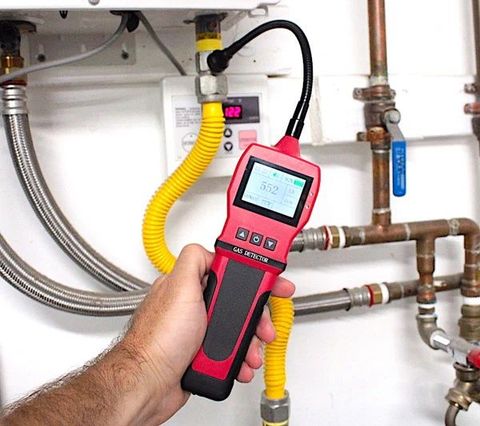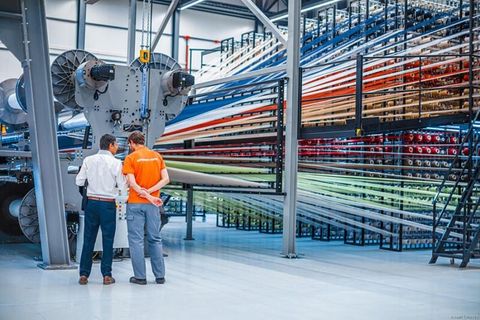Your Complete Guide to Emerging Packaging Trends and Technologies
Packaging plays a critical role in how products are stored, transported, and presented to consumers. Beyond simply containing a product, packaging now serves as a communication tool — conveying brand values, ensuring safety, and enhancing sustainability.
Over the past decade, the global packaging industry has shifted dramatically. The rise of e-commerce, environmental awareness, and technological innovation has redefined how packaging is designed and used. From biodegradable materials to smart packaging that tracks freshness or authenticity, today’s packaging technologies are becoming smarter, safer, and more sustainable.

The global packaging market, valued at over $1 trillion in 2024, continues to grow rapidly. This growth is driven by changing consumer behavior, stricter regulations, and innovations in digital and material science.
Importance
Packaging has evolved from a passive product container into a key factor influencing consumer experience, safety, and environmental impact. The importance of staying updated with emerging packaging technologies cannot be overstated.
Why It Matters:
-
Environmental Sustainability: With growing global waste concerns, brands are shifting to eco-friendly, recyclable, and biodegradable packaging.
-
Consumer Trust and Transparency: Smart packaging technologies like QR codes and NFC tags provide traceability, ensuring product authenticity.
-
E-Commerce Growth: The surge in online shopping demands durable and efficient packaging for safe transport.
-
Regulatory Compliance: Companies must align with global and local packaging laws to ensure safety and sustainability.
-
Brand Differentiation: Creative, functional, and sustainable packaging helps brands stand out in competitive markets.
Industries like food & beverage, pharmaceuticals, cosmetics, and logistics are especially affected, as packaging directly impacts product shelf life, hygiene, and consumer satisfaction.
Recent Updates
The packaging industry has witnessed a rapid transformation between 2024 and 2025, driven by advancements in digital technology and sustainability-focused policies.
Key Trends and Innovations:
| Trend / Technology | Description | Impact |
|---|---|---|
| Sustainable Packaging Materials | Shift to compostable, biodegradable, and paper-based alternatives. | Reduces plastic waste and carbon emissions. |
| Smart Packaging | Incorporates sensors, QR codes, or RFID chips for product tracking and authentication. | Enhances safety and transparency. |
| Minimalist & Lightweight Design | Uses less material without compromising strength. | Reduces shipping costs and waste. |
| AI-Driven Design Optimization | Artificial intelligence helps design efficient packaging shapes and materials. | Increases efficiency and sustainability. |
| Digital Printing | Enables short-run, customizable packaging for brands. | Reduces waste and allows personalization. |
| Reusable Packaging Systems | Focus on refillable or returnable packaging solutions. | Encourages circular economy practices. |
Notable Industry Updates (2024–2025):
-
Coca-Cola and Unilever have committed to 100% recyclable or reusable packaging by 2030.
-
India’s Extended Producer Responsibility (EPR) policy was updated in March 2024, increasing accountability for plastic waste.
-
Amazon’s “Frustration-Free Packaging” program (2025) now includes AI algorithms to suggest optimal box sizes for reduced waste.
-
Smart food packaging is integrating freshness indicators and temperature sensors to prevent spoilage during transport.
These innovations underline how technology and sustainability now work hand-in-hand to redefine the packaging landscape.
Laws and Policies
Packaging is regulated globally to promote consumer safety, environmental responsibility, and supply chain transparency. In India and worldwide, governments have introduced policies to reduce plastic pollution and encourage sustainable practices.
Key Policies Influencing Packaging:
| Policy / Regulation | Description | Region |
|---|---|---|
| Extended Producer Responsibility (EPR) 2024 | Holds producers accountable for post-consumer plastic waste management. | India |
| Plastic Waste Management Rules (PWM) 2016 – Amended 2024 | Bans single-use plastics and encourages recyclable materials. | India |
| EU Packaging and Packaging Waste Directive | Sets targets for recyclable packaging by 2030. | Europe |
| US FDA Packaging Regulations | Ensures materials used in food and pharma packaging are safe and approved. | United States |
| ISO 18601:2013 | Provides international guidelines for environmentally friendly packaging. | Global |
Compliance Highlights:
-
Companies must report packaging waste generation and recycling rates.
-
Non-compliance with EPR regulations can lead to penalties.
-
Use of BIS-certified materials is mandatory for certain food and pharmaceutical packaging applications.
-
Labels must include recyclability information for consumers.
These laws push companies toward eco-conscious packaging strategies, creating opportunities for innovation while ensuring environmental compliance.
Tools and Resources
Modern packaging design and management are supported by a variety of software tools, sustainability platforms, and testing systems. These resources help businesses reduce costs, improve efficiency, and ensure compliance.
Useful Tools and Platforms:
| Tool / Platform | Function | Key Benefit |
|---|---|---|
| Esko | Packaging design and prepress software | Streamlines packaging design and printing. |
| TOPS Pro | Packaging optimization software | Reduces packaging material and shipping costs. |
| ArtiosCAD | Structural design software for packaging | Ideal for prototyping and 3D modeling. |
| Sphera Packaging Sustainability | Tracks environmental impact | Supports sustainability reporting. |
| Latis Network (EPR Portal) | India’s official EPR registration platform | Enables compliance reporting for producers. |
| SmartLabel™ | Digital labeling tool | Provides transparency on ingredients and sourcing. |
Additional Resources:
-
Packaging Europe (Website): Latest industry news and sustainable innovations.
-
Indian Institute of Packaging (IIP): Certification and training programs for packaging professionals.
-
WRAP (Waste & Resources Action Programme): Global resource for circular economy and waste reduction.
-
Packhelp: Custom packaging design platform for small businesses.
These tools and resources empower both startups and established companies to design smarter, more efficient, and compliant packaging solutions.
FAQs
1. What are emerging packaging technologies?
Emerging packaging technologies include innovations such as smart packaging (with sensors or QR codes), biodegradable materials, AI-assisted design, and reusable packaging models that reduce waste.
2. How does smart packaging work?
Smart packaging integrates digital features like NFC, RFID, or QR codes to provide real-time product tracking, freshness monitoring, or authentication verification.
3. What is the main focus of sustainable packaging?
The focus is on reducing environmental impact through recyclable, compostable, or reusable materials and minimizing carbon emissions during production and transportation.
4. Are there laws in India promoting eco-friendly packaging?
Yes, India’s Plastic Waste Management Rules and EPR regulations encourage industries to use recyclable materials and take responsibility for waste recovery.
5. How can businesses adopt new packaging technologies affordably?
Small and medium businesses can start by using digital printing, lightweight designs, and certified recyclable materials. Government initiatives and EPR support programs also help offset costs.
Final Thoughts
The packaging industry is at a turning point where technology, sustainability, and consumer awareness intersect. As innovation continues, packaging will no longer be just a container — it will become an intelligent system that protects, informs, and interacts with consumers.
For businesses, adapting to these emerging trends means staying competitive and compliant in a world that values sustainability and transparency. For consumers, it ensures safer, greener, and smarter products.
By embracing these changes, industries can not only reduce their environmental footprint but also help shape a more sustainable and technologically advanced future for global packaging.





